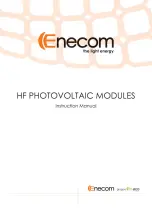
Planning and installation instructions
18
E E EKSH26P
DAIKIN Solar P-SYS
008.1629544_01 – 12/2016
4
x
Installation
4.3
Laying the connecting pipe
The connection pipe between the solar panel array and the hot
water storage tank must be made of pressure-resistant metal
pipes (CON 15P16 / CON 15P20 or Cu Ø 22 mm). The use of
plastic piping is not allowed.
●
Lay and affix prefabricated connection pipes (inflow and
return flow) with integrated sensor cable (see chap. 3)
between the planned installation location and the solar panel
array in the inner roof and the site of the hot water storage
tank.
– Make sure there is adequate length for connection to the
hot water storage tank and the flat solar panels.
– The maximum permissible overall pipe length must not be
exceeded (see tab. 4-2).
If the CON 15P16 or CON 15P20 connection pipes do not
reach, DAIKIN recommends using the extending the con-
nection pipes with the CON XP pressurised solar system
connectors (see chap. 3.3.1).
– The inlet connection pipe must be connected to the solar
panel at the top and the return flow connection pipe at the
bottom (see fig. 4-1 to fig. 4-3 and fig. 4-5).
Tab. 4-2 Maximum lengths of the DAIKIN connecting pipes
Notes on the roof penetration of the connecting pipe
Carry out the following steps:
1. Make the roof penetration points as close as possible under
the panel connecting points. Make sure that effective sealing
of the outer roof area can be ensured.
2. Lay the connection pipes up to the roof penetration and fix in
position (e.g. with clamps).
3. Cut off or cut open the heat insulation of the roof underneath
the roof penetration in such a way that the connecting pipe
can be laid to the roof penetration.
4. Run the connecting pipes through the roof at the points pro-
vided. For the required continuous heat insulation (also inside
the roof), seal the insulation at the joints (e.g. with adhesive
tape).
5.
For on-roof mounting:
For roof penetration in roof-mounted systems, DAIKIN recom-
mends laying the connection pipe through a ventilating tile
into the inside of the roof.
Guide the connection pipe through the ventilating tile. Ensure
that the heat insulation hoses are not damaged.
If no suitable ventilating elements are available for the exist-
ing roof covering, consult a roofer to ensure a permanently
sealed roof penetration for the connection pipe.
With flat roof mounting:
a) Cut off the thermal insulating hoses of the connecting
pipes so that the pipes can be passed through the individ-
ual roof penetrations.
b) Pull the inflow pipe (top on the flat solar panel) as well as
the return flow pipe (bottom on the flat solar panel)
through the matching screw fitting of the respective roof
penetration. Following this, push the equipotential bond-
ing terminal/collector temperature sensor cable from the
inside through the relevant M16 screw connection.
c) The flat roof penetration must be professionally sealed in
the roof (e.g. by means of bitumen sheeting). Involve a
roofer if necessary.
Depending on the type of connection, seal off the unused
cable screw fittings in the flat roof penetrations with the
matching seal screw fittings.
d) Tighten the cable screw fittings in the roof penetrations
(for connection pipes and cables).
If longer distances need to be covered, calcula-
tions need to be made for the dimensioning of
the connecting pipes.
Contact DAIKIN Service.
Number of solar
panels
Maximum possible total pipe length
with CON 15…
P16
P20
2
25 m
25 m
3
25 m
25 m
4
–
25 m
5
–
25 m
CAUTION!
Leaking vapour barriers can lead to building
damage.
●
Reseal the vapour barrier from the inside at
the penetration points of the connecting
pipes and cable.
The connecting cable for the solar panel temper-
ature sensor is drawn into the heat insulation hose
together with the inflow connecting pipe.
For flat roof mounting:
For two-way connection of the solar panel array for
the roof penetration of the inlet and return flow
pipes, DAIKIN recommends installing two separate flat roof
penetrations.
With 3 and more solar panels, the solar panel array must be
two-way connected. The CON FE roof penetration required
for this is equipped with seals for the cable screw fittings.
They must be removed to match the connection type.
Fig. 4-4
Steps 5a and 5b
[a]
[b]















































